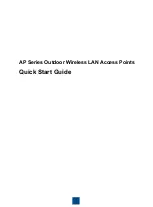
LANCOM OAP
-
54
-
1 Wireless – LANCOM OAC
-
54
-
1 Wireless
Chapter 5: Advanced wireless LAN configuration
50
EN
at certain intervals of the connection between the transmitter and receiver.
The areas where the waves amplify or cancel themselves out are known as
Fresnel zones.
The Fresnel zone 1 must remain free from obstruction in order to ensure that
the maximum level of output from the transmitting antenna reaches the recei-
ving antenna. Any obstructing element protruding into this zone will signifi-
cantly impair the effective signal power. The object not only screens off a
portion of the Fresnel zone, but the resulting reflections also lead to a signifi-
cant reduction in signal reception.
The radius (R) of Fresnel zone 1 is calculated with the following formula assu-
ming that the signal wavelength (
λ
) and the distance between transmitter
and receiver (d) are known.
R = 0.5 *
√
(
λ
* d)
The wavelength in the 2.4 GHz band is approx. 0.125 m, in the 5 GHz band
approx. 0.05 m.
Example:
With a separating distance of 4 km between the two antennae, the
radius of Fresnel zone 1 in the 2.4-GHz band is
11 m
, in the 5-GHz band
7 m
.
To ensure that the Fresnel zone 1 remains unobstructed, the height of the
antennas must exceed that of the highest obstruction by this radius. The full
height of the antenna mast (M) should be as depicted:
WLAN Router
ANTENNA
ADMINISTRATION
ACCESS POINT
ANTENNA
PRODUCTION
OBSTRUCTION
Fresnel zone 1
Fresnel zone 2
Fresnel zone 3
Radius R
Distance d
















































